Click on images to enlarge
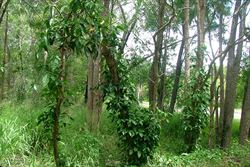
infestation (Photo: Sheldon Navie)
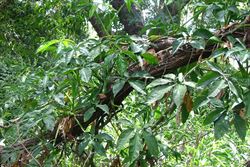
climbing habit (Photo: Sheldon Navie)
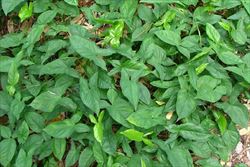
creeping habit with juvenile leaves (Photo: Sheldon Navie)
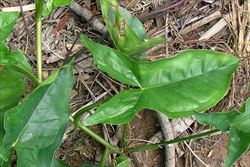
arrowhead-shaped juvenile leaf (Photo: Sheldon Navie)

three-lobed intermediate leaves at the base of the climbing stems (Photo: Sheldon Navie)
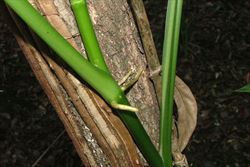
fleshy climbing stem, with aerial roots beginning to develop, and leaf stalks (Photo: Sheldon Navie)
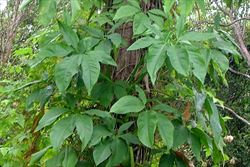
much larger adult leaves with several leaflets (Photo: Sheldon Navie)
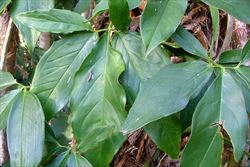
much larger adult leaves with several leaflets (Photo: Sheldon Navie)
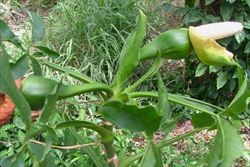
the flower clusters are borne singly, or in twos or threes, in the forks of the upper leaves (Photo: Sheldon Navie)
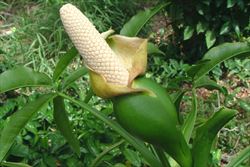
relatively large flower cluster with broad base and greenish-yellow bract (Photo: Sheldon Navie)

close-up of six-sided male flowers (Photo: Sheldon Navie)
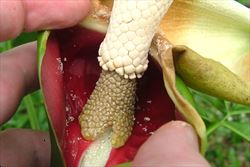
close-up of brownish-green female flowers below the whitish male flowers (Photo: Sheldon Navie)

immature fruit with brownish male flowers and withered bract (Photo: Sheldon Navie)
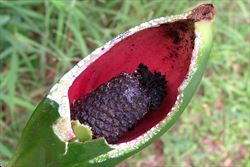
the inside of the protective fruit covering is reddish or purplish in colour (Photo: Sheldon Navie)
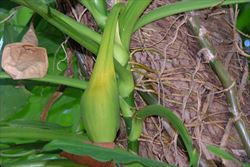
mature fruit (Photo: Sheldon Navie)
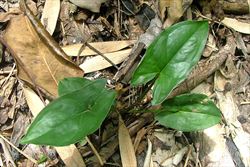
'seedling' (Photo: Sheldon Navie)
Scientific Name
Syngonium neglectum Schott
Synonyms
Syngonium podophyllum Schott (misapplied)
Family
Araceae
Common Names
arrowhead vine, goosefoot, syngonium
Origin
Native to Mexico, where it is widespread.
Naturalised Distribution
Naturalised in south-eastern Queensland, and possibly more widely naturalised throughout the coastal districts of eastern Queensland.
Notes
Syngoniums (Syngonium spp.) are regarded as environmental weeds in Queensland, where they invade urban bushland, riparian vegetation, coastal environs, open woodlands and closed forests. Until recently Syngonium podophyllum was thought to be the only problem species in Queensland, but there are actually three closely related species present in this state (i.e. Syngonium podophyllum, Syngonium neglectum and Syngonium angustatum).
Field observations indicate that all three species are equally invasive and common in bushland in south-eastern Queensland. Since Syngonium neglectum has been mistaken for Syngonium podophyllum in the past, it may also be much more widespread in other parts of Queensland.

